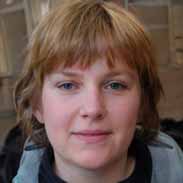Mycology: Mycology 1 – Flashcards
Unlock all answers in this set
Unlock answersquestion
What are the different phyla of fungi?
answer
1. Chytridiomycota 2. Glomeromycota 3. Zygomycota 4. Ascomycota (including deutoromycetes) 5. Basidomycota
question
Describe Chytridiomycota:
answer
Chytridiomycota: 1. Form *motile spores* called zoospores 2. Meiosis occurs in *resting sporangium*
question
Describe Glomeromycota
answer
Glomeromycota: 1. Forms spores containing *hundreds of nuclei*; no known sexual reproduction
question
Describe Zygomycota:
answer
Zygomycota: 1. Form asexual spores called sporangiospores 2. Meiosis occurs in *zygo*spore
question
Describe Ascomycota
answer
Ascomycota: 1. Forms asexual spores called conidia 2. Meiosis occurs in *asc*us (a type of sexual spore)
question
Describe Basidiomycota
answer
Basidiomycota: 1. Meiosis occurs in *basid*ium (a type of spore)
question
Terminology for Clinical Mycology: Define Mold
answer
Mold: 1. A morphological term referring to a *filamentous (multicellular) fungus*
question
Terminology for Clinical Mycology: Define Yeast
answer
Yest: 1. A morphological term referring to a *unicellular fungus* a. Non-filamentous form (circular)
question
Terminology for Clinical Mycology: Define Dimorphic fungi:
answer
1. Dimorphic fungi - A class of fungi characterized by two forms of growth: a. Growth as a *mold* with septate hyphae in their natural reservoir (e.g. soil) or when incubated at 25 degrees C on conventional fungal media (potato dextrose agars) b. Growth as a *yeast* in the tissue of an animal/person or when incubated at 37 degrees C on enriched media (brain/heart infusion agar).
question
Terminology for Clinical Mycology: Define hypha (plural hyphae)
answer
1. Hypha is a long, branching filamentous cell. Hyphae are the main mode of vegetative growth, and are collectively called a *mycelium*
question
Terminology for Clinical Mycology: Define mycelium
answer
1. Mycelium is the *intertwined mass of hyphae* that froms the mold colony a. Vegetative mycelium is composed of those hyphae that adhere to the substrate and absorbs nutrients. b. Aerial mycelium is composed of those hyphae that grow up from the surface and support the spores
question
Terminology for Clinical Mycology: Define septate
answer
Septate: *Cross-walls (septae) that divide hyphae* into segments. a. If there are few or no cross-walls the hyphae are considered to be aseptate
question
Terminology for Clinical Mycology: Define conidia
answer
Conidia: 1. Conidia: *asexual* spores borne externally on hyphae or on a *condiophore*
question
Terminology for Clinical Mycology: Define condiophore
answer
Conidiophore: 1. Conidiophore: specialized *hyphal stalk* on which conidia develop either singly or in clusters
question
Terminology for Clinical Mycology: Define germ-tube
answer
Germ-tube: 1. *The initial hyphal outgrowth* of a germinating spore or yeast a. Especially important for identification of *candida albicans*
question
Terminology for Clinical Mycology: Define Pseudohyphae (or pseudomycelium)
answer
Pseudohyphae (Pseudomycelium) 1. *Chains of successively budding yeast cells* that have complete cell walls, but have not detached from one another
question
Terminology for Clinical Mycology: Define Rhizoid
answer
Rhizoid: 1. Rhizoid: *rootlike branched hyphae* which anchor the mycelium to the substrate a Characteristic of certain zygomycetes
question
Terminology for Clinical Mycology: Define Dematiaceous Molds
answer
Dematiaceous Molds: 1. Term dematiaceous refers to molds whose hyphae are pigmented. Because of the pigment, the colonies of these fungi will appear dark green, brown or black *on both the top and reverse (underside)*



